Hai Phong - Home of Beautiful French Architecture by the Sea
As one of the most important cities in Vietnam under the French colonial period, Hai Phong has been planned and developed by the French since the early years of the 20th century. The architectural features imbued with ancient French imprints are also associated with cultural life and are witnesses to the historical development of society.
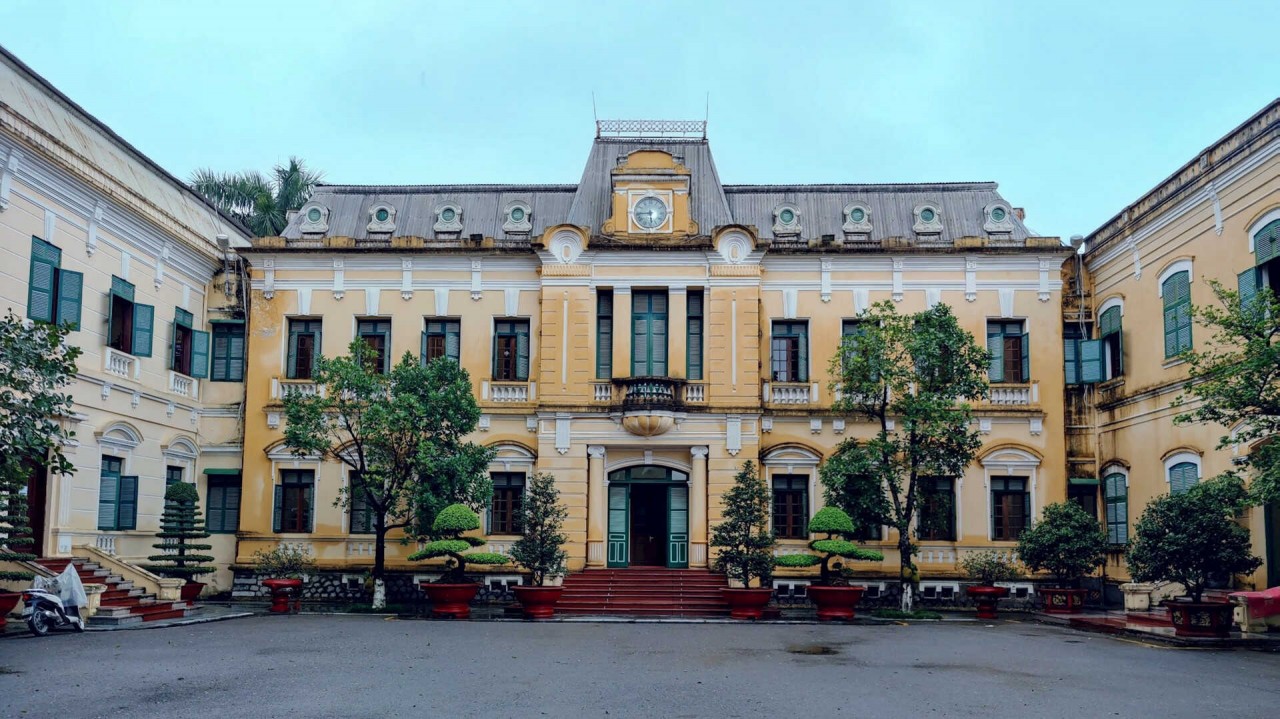 |
| The Governor's Building is currently the headquarters of the People's Committee of Hai Phong City. Photo: Le Minh |
East meets West in architecture
The urban development of Hai Phong was slower than in big cities like Hanoi, Sai Gon, or Da Nang after the war. The city used to just be some land by a river belonging to the Hai Duong region, which had not been built much during the feudal reigns. Only when the French occupied Vietnam did Hai Phong start to develop into the three major urban areas in the country, after Sai Gon and Hanoi.
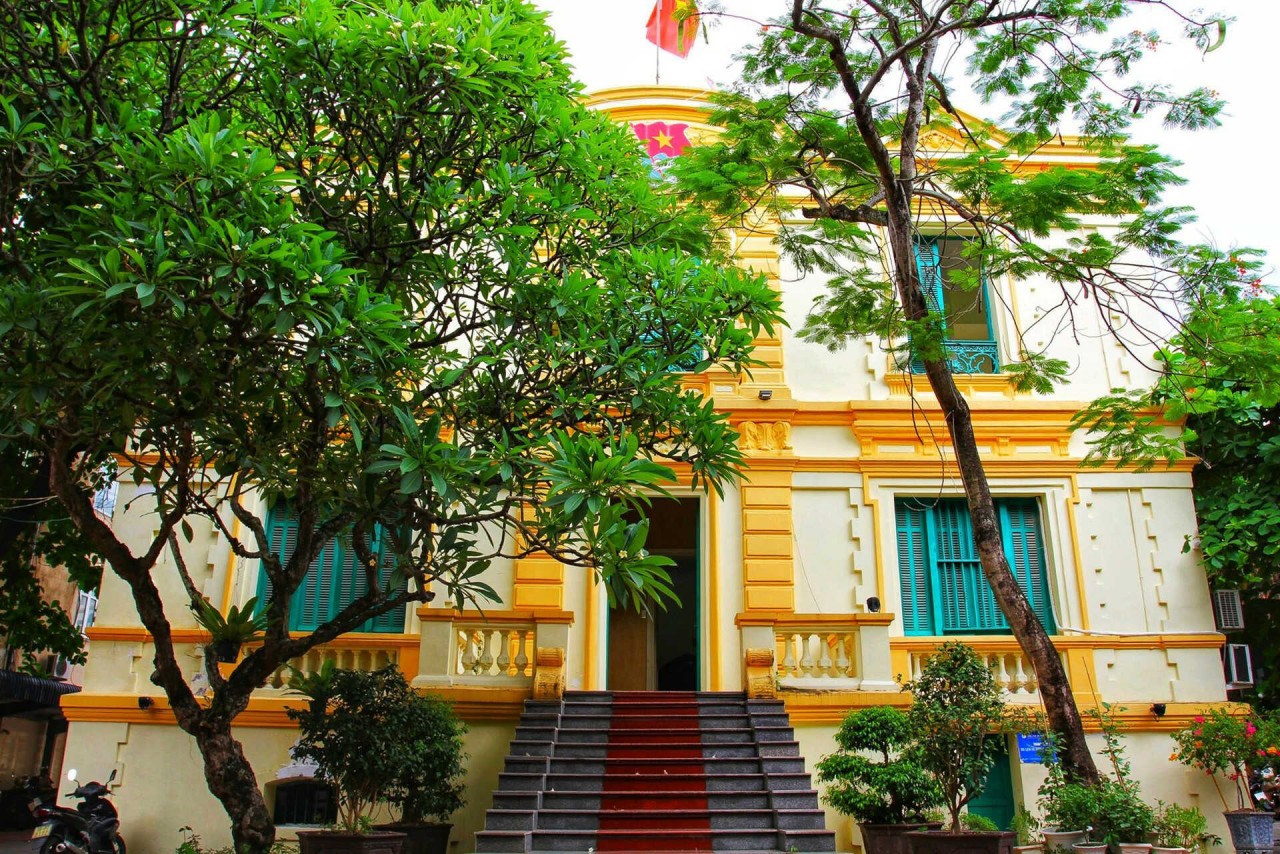 |
| Near the Opera House is Tran Hung Dao Street, where is the private house Fesquet of a French doctor. This building is currently the headquarters of Hai Phong Youth Union. Photo: Nguoihanoi |
Hai Phong architecture is a harmonious combination of two Asian and European cultures. It gives the city a distinct urban beauty that is both elegant, unique, and powerful. Up to now, Hai Phong still retains many neighborhoods with fairly intact architecture from the French colonial period. As in Hong Bang district, a lot of streets with villas built by the French are still in excellent condition. Former Hai Phong City Hall (today's Hai Phong People's Committee Office) and the town hospital (today's Military Hospital 7) were among the first buildings that the French constructed in the city.
"In 1885, the French started to develop Hai Phong into a port city by building canals based on the Lien Khe Canal of An Bien Village," Do Xuan Trung, deputy director of Hai Phong Museum told Viet Nam News.
"They demolished the old structures of the coastal fishing village to form a foundation for a new city. Then the city gradually emerged with various buildings of western architecture on the east-west and north-south axis creating square areas like in a chessboard."
At the recent Scientific Conference "Promoting the Value of French colonial urban heritage in Association with cultural tourism in Hai Phong", Associate Professor - Dr. Nguyen Hong Thuc highly appreciated the excellent Hai Phong urban architectural heritage. According to her, the French heritage is perfectly preserved and taken care of that a lot of sites have become beautiful destinations for tourism.
The tangible presense of history in architecture
Historical documents show that the City Hall has been kept almost intact since it was completed in 1905.
It was built in rectangular form, with two storeys, and designed symmetrically. Its main gate is located on the axis of the building, facing south. The building was decorated sophisticatedly. Working rooms were surrounded by big corridors.
The City Hall and buildings constructed after that time were designed to suit Vietnamese tropical weather.
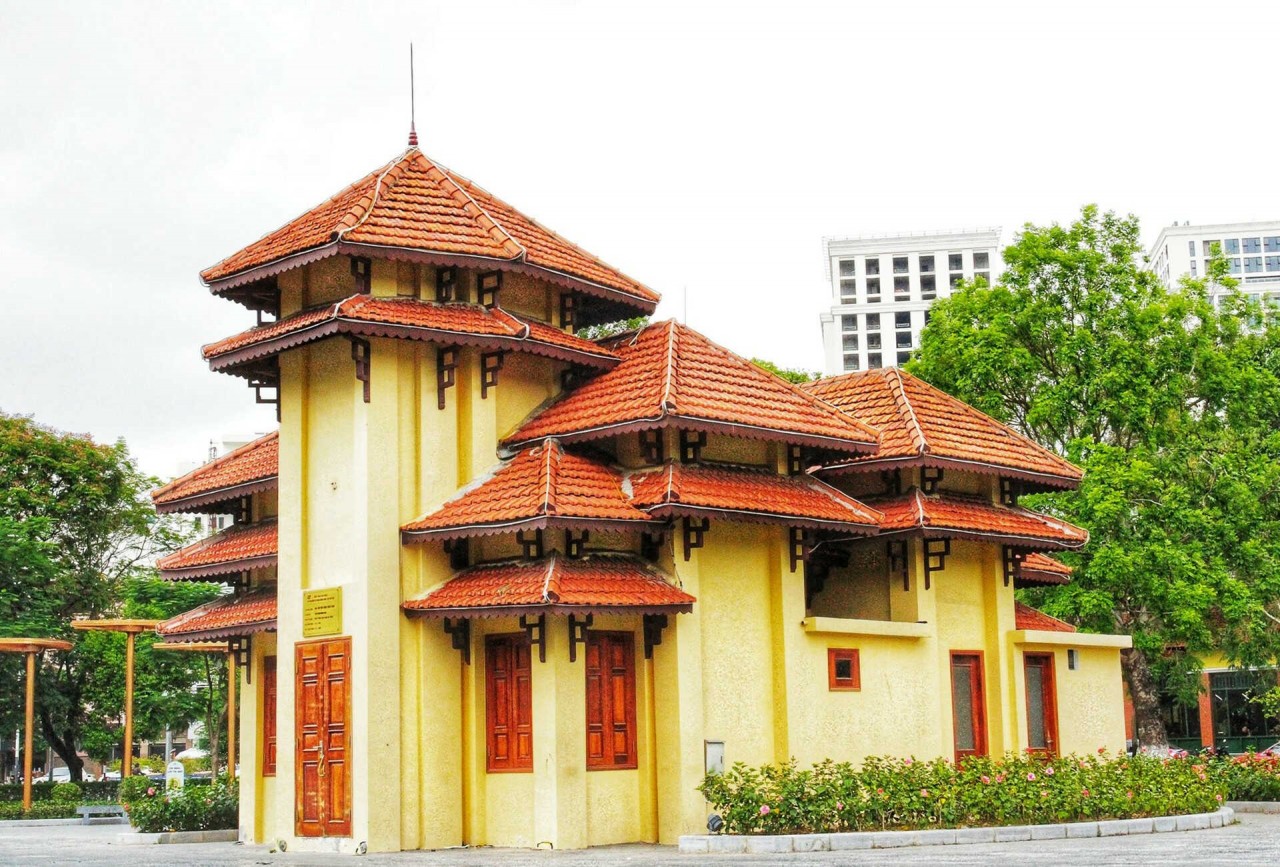 |
| In Kim Dong Park, there is a multi-roofed building built in 1942, now the library of Hong Bang district. Photo: Nguoihanoi |
"Besides the unity in design and aesthetics, the buildings offer high-effective capacity, and safety, and are not humid, but cool in summer and warm in winter," noted researcher Ngo Dang Loi. "Later buildings constructed by the Vietnamese did not have such strong points."
Due to Hai Phong's low terrain and many marshland areas, the French engineers dug the Bonal Canal (in today's central park and Tam Bac Lake) to separate the residential areas of the French colonials and Vietnamese indigenous people.
The most famous of the ancient French works in Hai Phong is the Municipal Theater. Hai Phong Opera House is one of the three major theaters left by the French in Vietnam, meticulously designed by a French architect following the prototype of the Paris theater, with elegant appearance, aesthetics, and palatial, European-style interior.
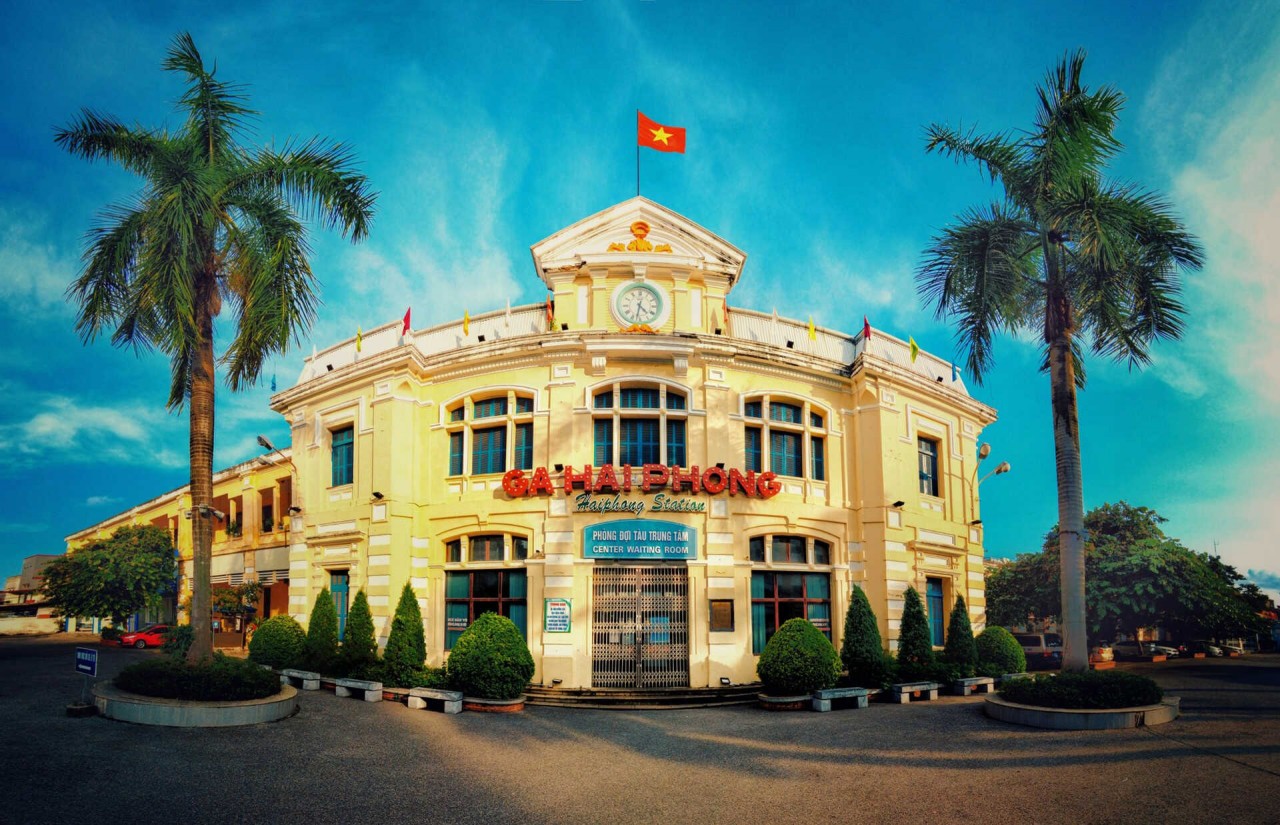 |
| Hai Phong hosts 500 heritage sites, 115 of which have been recognized as national heritage sites. Photo: Nguoihanoi |
Hai Phong hosts 500 heritage sites, 115 of which have been recognized as national heritage sites.
Chairman of Hai Phong People's Committee Nguyen Van Tung signed a decision in July 2021 to establish a council to examine residential areas, buildings with high artistic values, as well as culture and history that need to be preserved, renovated, and protected. The council includes 17 people from concerned agencies, sectors, and localities.
The council has met to list nearly 500 buildings and divide them into three categories to treat them properly.
 | Visit The Stunning Lotus Field In Quang Nam The large Tra Ly – Dong Lon lotus field in Quang Nam is well-known for its stunning scenery, charming rivers, and pristine nature. |
 | Experience Dawn At The Largest Fishing Market In Quang Nam When the sun first rises behind the mountains and hundreds of fishing boats approach the shore of Tam Tien Beach, tourists can witness the lovely ... |
 | Golden Bridge In Da Nang Among Top 10’s Most Iconic Recently, Da Nang Golden Bridge was honored by Luxebook magazine as one of the most iconic bridges in the world. |
Recommended
 Travel
Travel
Strategies for Sustainable Growth of Vietnam’s Tourism from International Markets
 Travel
Travel
Vietnam Strengthens Its Presence On The Global Tourism Map
 Multimedia
Multimedia
Phong Nha-Ke Bang National Park Named Top Adventure Travel Site
 Travel
Travel
Phong Nha Named Top Budget-Friendly Travel Destination for Spring 2025: Agoda
Popular article
 Travel
Travel
Four Indian Films Introduced to Lao Cai Audience
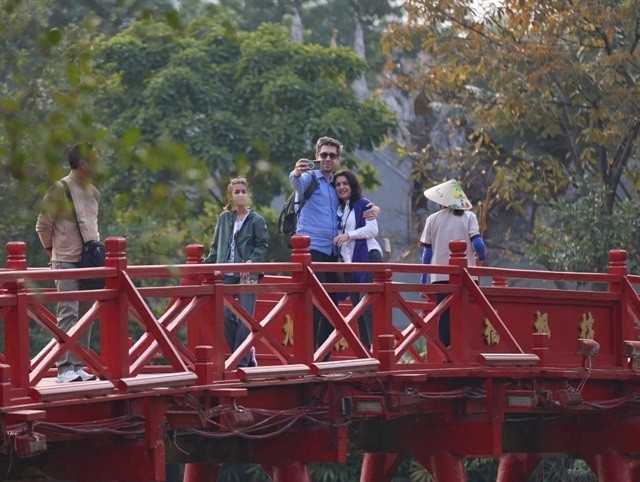 Travel
Travel
Vietnam to Waive Visas for Citizens from 12 Countries until 2028
 Travel
Travel
Ninh Binh Full-day Tour among World’s Top Experiences: TripAdvisor
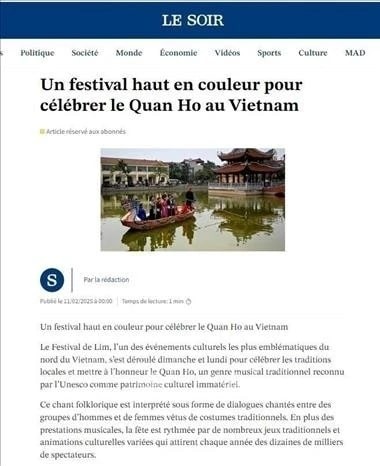 Travel
Travel







